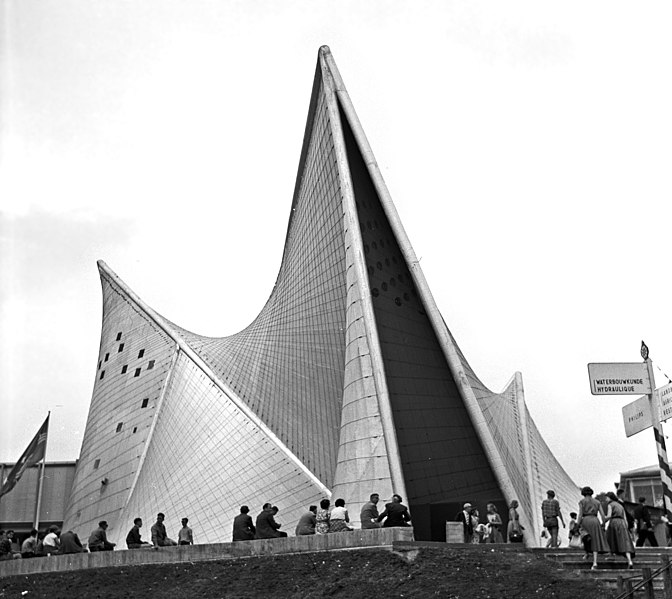
The Philips Pavilion was a World’s Fair pavilion designed for Expo ’58 in Brussels by the office of Le Corbusier. Commissioned by Philips, an electronics company based in the Netherlands, the pavilion was designed to house a multimedia spectacle that celebrated postwar technological progress. Because Corbusier was busy with the planning of Chandigarh, much of the project management was assigned to Iannis Xenakis, who was also an experimental composer.
The pavilion is a cluster of nine hyperbolic paraboloids, composed asymmetrically to create dynamically-angled contours and constructed out of prestressed concrete. Steel tension cables on the exterior give the pavilion its signature reticulated appearance. According to Xenakis, the idea of using curved surfaces composed of straight lines was inspired by his composition Metastasis, premiered in 1955.
